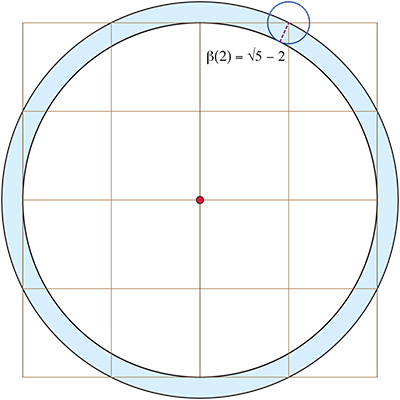Let $C(r)$ be the origin-centered circle of radius $r$,
and let $\beta(r)$ be the exterior buffer around $C(r)$:
the distance from $C(r)$ to the closest lattice point exterior to $C(r)$:

For example, $\beta(2) = \sqrt{5}-2 \approx 0.24$ because there are no lattice
points strictly between $C(2)$ and $C(\sqrt{5})$, and this is the largest
buffer around $C(2)$.
I am interested in the behavior of $\beta(r)$ for large $r \in \mathbb{R}$, as I believe understanding that behavior will answer my question concerning ratchet spirals, Lattice radial-step (ratchet) spirals.
I'll pose a specific question before formulating the general question.
Q1. Is there an $R$ such that, for all $r > R$, $\beta(r) < \frac{1}{2}$ ?
If so, then, for example, the spiral $S(3,\frac{1}{2})$ depicted in that question is unbounded.
Q2. Is there an $R(\epsilon)$ such that, for all $r > R(\epsilon)$, $\beta(r) < \epsilon$, where $0 < \epsilon < 1$ ?
